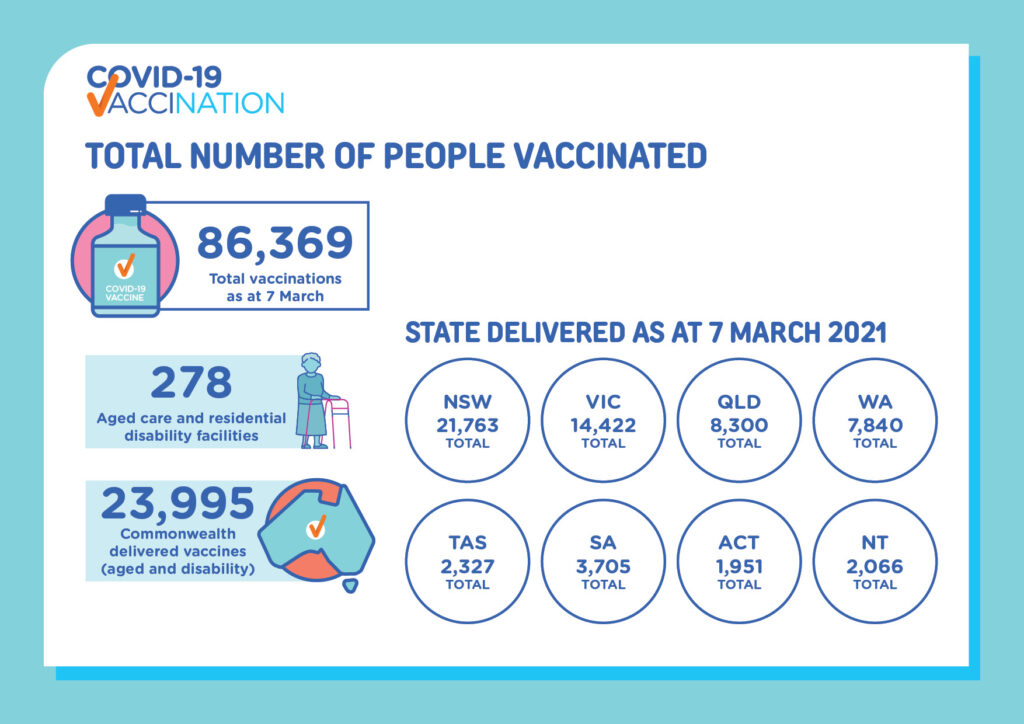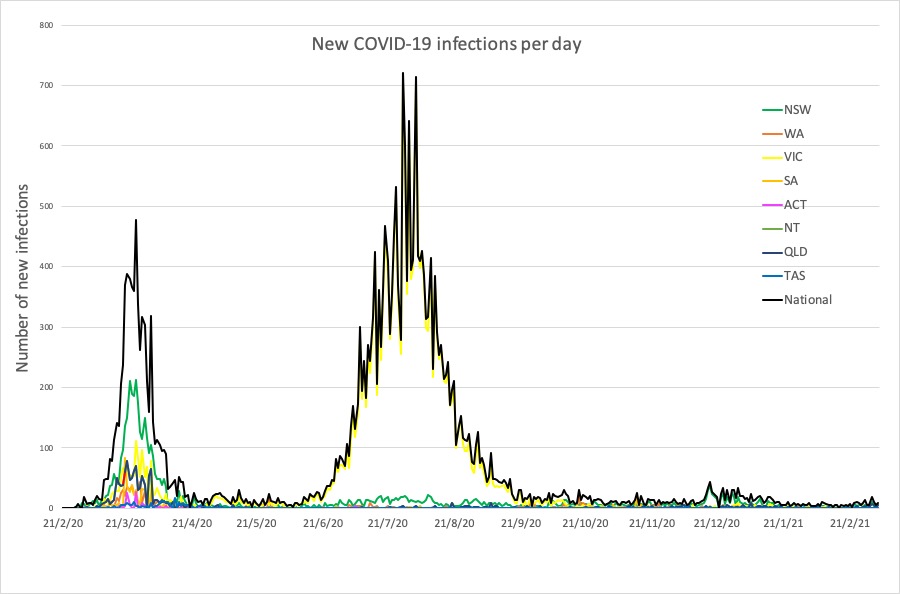And high pollen counts independently linked to high COVID-19 infections.
Welcome to The Medical Republic’s COVID Catch-Up.
It’s the day’s COVID-19 news in one convenient post. Email bianca@biancanogrady.com with any tips, comments or feedback.
9 March
- Study in 65,000 vaccinated healthcare workers finds very low rate of anaphylaxis.
- Pollen counts linked to increase COVID-19 infections.
- US CDC releases guide to socialising for the fully-vaccinated.
- Latest confirmed COVID-19 infection numbers from around Australia.
A study of nearly 65,000 healthcare workers who received an mRNA COVID-19 vaccine has found an overall anaphylaxis rate of just 0.025%, with nearly all cases occurring in individuals with a history of allergy or anaphylaxis.
The paper, published in JAMA, reported that around 2% of those vaccinated reported some allergic symptoms.
The authors noted that while most of the individuals who experienced anaphylaxis had a history of allergy or anaphylaxis, the prevalence of severe allergy in the general population suggests that there were around 4000 individuals with that same history who were vaccinated without incident.
Hayfever sufferers now have another reason to hate pollen: researchers think pollen exposure could increase susceptibility to SARS-CoV-2 infection.
A study published in PNAS examined associations between pollen counts, meteorological factors and SARS-CoV-2 infection rates at 130 weather stations across 31 countries and five continents.
They found that pollen counts were significantly positively associated with SARS-CoV-2 infection rates.
Even after factoring in population density and lockdown measures in each location, researchers calculated that airborne pollen – in concert with humidity and temperature – explained around 44% of the variation in infection rates across all sites.
The US Centers for Disease Control has given a glimpse of what a COVID-19-vaccinated future might look like, releasing its first guidelines on how fully vaccinated people can safely visit others.
The advice is that fully vaccinated individuals can now mingle indoors with vaccinated and unvaccinated people from one other household without the need for a mask – unless there are unvaccinated people there who are at increased risk of severe COVID-19.
The CDC also says that fully vaccinated people who have been exposed to COVID-19 no longer need to isolate or get tested unless they develop symptoms.
They still advise mask-wearing as much as possible, physical distancing, avoiding crowds and poorly ventilated spaces.
Interestingly – and perhaps paradoxically – the same guidelines acknowledge that it’s still not clear how well the COVID-19 vaccines prevent people from spreading the disease.
Meanwhile, here’s the latest on how Australia’s vaccination campaign is progressing:

Here are the latest confirmed COVID-19 infection numbers from around Australia to 9pm Monday:
National – 29,046 with 909 deaths
ACT – 122 (0)
NSW – 5210 (1)
NT – 105 (0)
QLD – 1356 (5)
SA – 618 (0)
TAS – 234 (0)
VIC – 20,482 (1)
WA – 919 (2)



